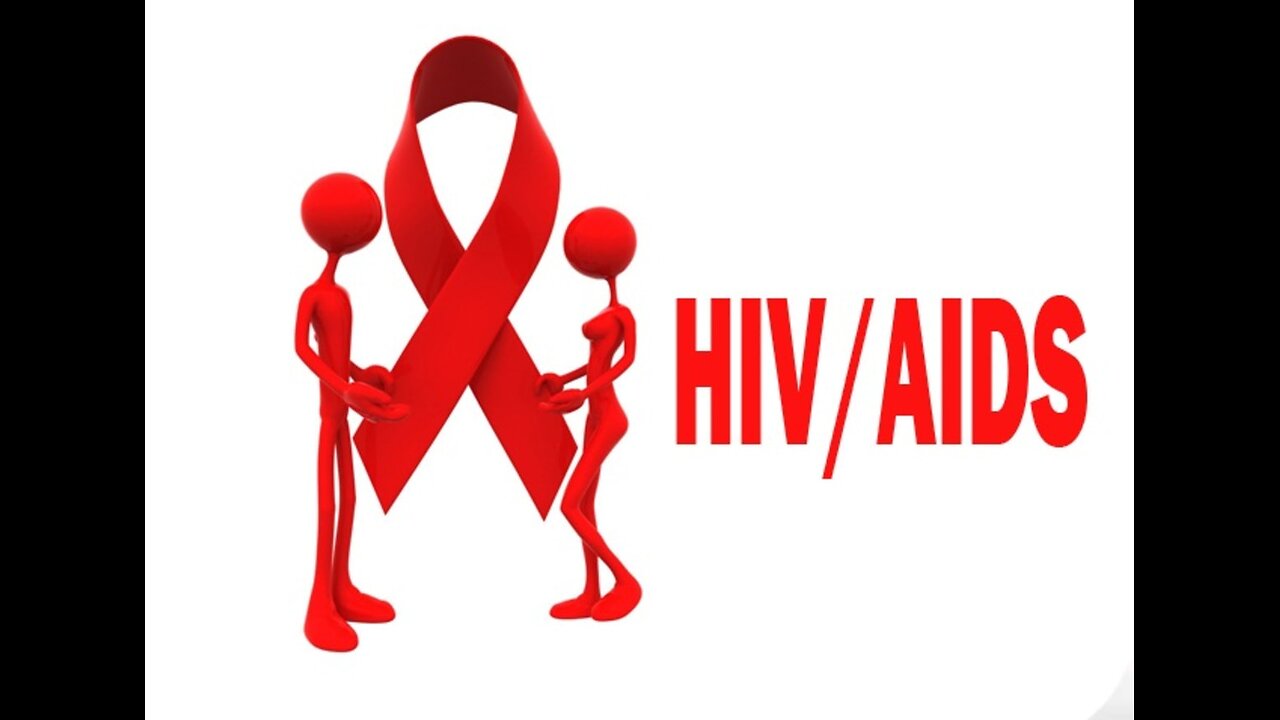Premium Only Content

"The Science Behind HIV and AIDS | How Does the Virus Work?" | 2023 | AIM Pharma
HIV and AIDS Overview
Introduction
Human Immunodeficiency Virus (HIV) and Acquired Immunodeficiency Syndrome (AIDS) have been global health concerns for several decades. These diseases have had a profound impact on individuals, communities, and entire nations. In this comprehensive overview, we will delve into the origins, transmission, pathogenesis, diagnosis, treatment, prevention, and social implications of HIV and AIDS.
Historical Background
The story of HIV and AIDS begins in the early 1980s when a mysterious illness began to affect a specific population in the United States, particularly among gay men. Initially, this condition was known as GRID (Gay-Related Immune Deficiency) but was later renamed AIDS when it became evident that it affected individuals from various backgrounds. The discovery of HIV as the causative agent occurred in 1983, marking a pivotal moment in the understanding of this disease.
HIV: The Virus
2.1 Structure and Classification
HIV belongs to the family of retroviruses, which are RNA viruses capable of reverse transcription. It is further divided into two main types: HIV-1 and HIV-2. HIV-1 is the most widespread and virulent strain globally, whereas HIV-2 is mainly found in West Africa. The virus has a lipid envelope derived from the host cell membrane, which is studded with glycoproteins that facilitate attachment to host cells.
2.2 Modes of Transmission
HIV is primarily transmitted through:
a) Unprotected sexual intercourse: Sexual contact remains the most common mode of HIV transmission, with vaginal, anal, and oral sex all posing risks.
b) Blood-to-blood contact: Sharing contaminated needles or syringes, blood transfusions with infected blood (rare in developed countries due to screening), and accidental needlestick injuries in healthcare settings can transmit HIV.
c) Mother-to-child transmission: During childbirth or breastfeeding, HIV can be transmitted from an infected mother to her child.
d) Occupational exposure: Healthcare workers are at risk of HIV transmission through accidental needlesticks or contact with infected blood.
2.3 Pathogenesis
Once HIV enters the body, it targets and infects CD4+ T cells, which are vital components of the immune system. The virus replicates within these cells, leading to their destruction. This progressive loss of CD4+ T cells weakens the immune system, rendering the infected individual susceptible to opportunistic infections and malignancies.
AIDS: The Syndrome
3.1 Definition
Acquired Immunodeficiency Syndrome (AIDS) is the advanced stage of HIV infection. It is characterized by a severely compromised immune system, with CD4+ T cell counts falling below a certain threshold (usually below 200 cells/mm³). AIDS is diagnosed when an HIV-positive individual develops one or more opportunistic infections or pAIDS-defining cancers.
3.2 Opportunistic Infections and AIDS-Defining Cancers
A wide range of infections and malignancies can define AIDS, including Pneumocystis pneumonia (PCP), Kaposi's sarcoma, and tuberculosis. These conditions typically do not cause severe illness in individuals with a healthy immune system but can be life-threatening in AIDS patients.
Diagnosis and Testing
4.1 HIV Testing
Diagnosing HIV involves various tests, including:
a) Antibody tests: Detect antibodies producedn by the immune system in response to HIV infection.
b) Antigen tests: Detect specific HIV proteins, such as p24 antigen.
c) Nucleic acid tests (NATs): Detect HIV RNA directly in the blood, providing early detection.
4.2 Staging
HIV infection is staged based on CD4+ T cell counts and viral load. The stages range from acute infection to advanced HIV disease (AIDS).
Treatment
5.1 Antiretroviral Therapy (ART)
The cornerstone of HIV treatment is Antiretroviral Therapy (ART). ART consists of a combination of drugs that target different stages of the HIV life cycle. It effectively suppresses viral replication, allowing the immune system to recover and reducing the risk of disease progression and transmission.
5.2 Pre-exposure Prophylaxis (PrEP) and Post-exposure Prophylaxis (PEP)
PrEP involves the use of antiretroviral drugs by HIV-negative individuals at high risk of infection to prevent transmission. PEP, on the other hand, is a short-term treatment for potential HIV exposure, typically administered within 72 hours of a high-risk event.
Prevention
6.1 Safer Sex Practices
Promoting safer sex practices, such as condom use, regular testing, and open communication about sexual health, is crucial in preventing HIV transmission
Conclusion
HIV and AIDS have been formidable adversaries in the realm of global health. However, significant progress has been made in understanding, diagnosing, treating, and preventing these diseases. With continued research, improved access to care, and enhanced awareness, the goal of ending the HIV/AIDS epidemic is within reach, offering hope for a healthier future for all.
I used copywirte content
AIM Pharma 2023
-
 36:50
36:50
Anthony Pompliano
2 days ago $9.16 earnedInvestors Are ALL-IN On Bitcoin
19.5K7 -
 32:19
32:19
SB Mowing
9 days agoA Backyard She’s NEVER Seen – Now Safe for the Kids to Play!
24.7K17 -
![[Day 26] CS Blast bounty baby](https://1a-1791.com/video/fwe2/8a/s8/1/Z/H/j/_/ZHj_w.0kob-small-Day-26-CS-Blast-bounty-baby.jpg) 2:09:11
2:09:11
ggezlol_tv
6 hours ago[Day 26] CS Blast bounty baby
42K1 -
 2:32:17
2:32:17
Sgtfinesse
5 hours ago💥Sunday Morning Hunt for Featherweight Artifact | New World PVP Server: Sclavia
57K3 -
 11:25
11:25
Film Threat
22 hours agoLET'S DISCUSS THE 2025 OSCAR NOMINATIONS | Film Threat News
41.7K16 -
 13:07
13:07
DEADBUGsays
6 hours agoThe Southport Massacre, The Great British Cover-Up
36.7K23 -
 25:26
25:26
hickok45
9 hours agoSunday Shoot-a-Round # 265
31.1K28 -
 30:55
30:55
Tundra Tactical
20 hours ago $17.84 earnedFaith, Family, Gun Rights : Tundra Tactical Interviews Erich Pratt Vice President Of GOA
107K35 -
 24:08
24:08
MYLUNCHBREAK CHANNEL PAGE
1 day agoUnder The Necropolis - Pt 4
243K85 -
 1:26:44
1:26:44
Tactical Advisor
1 day agoTrump Starting Strong/Shot Show Recap | Vault Room Live Stream 015
132K10